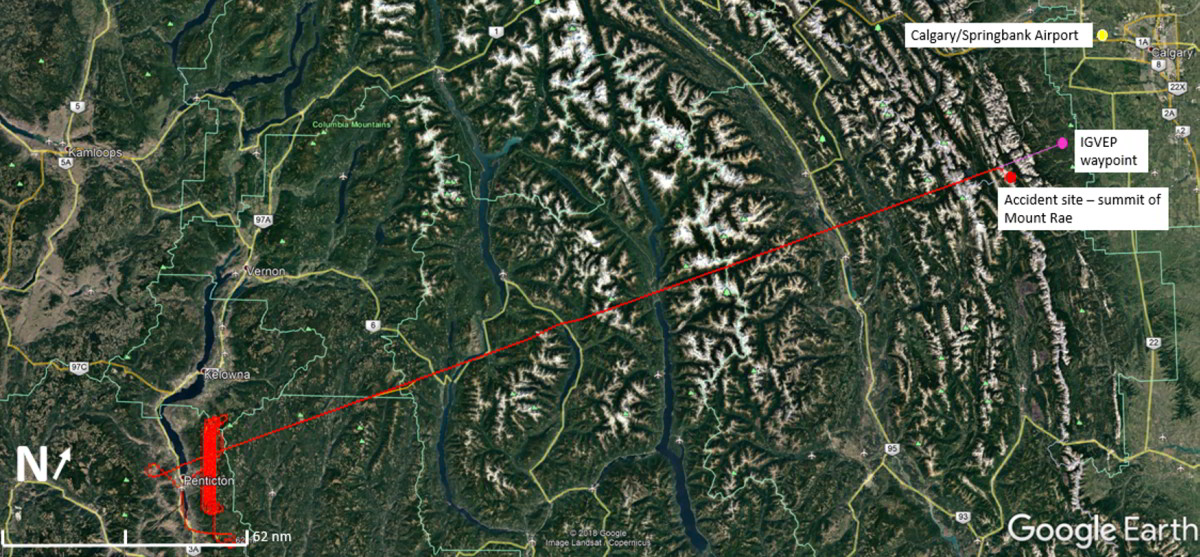August 8, 2019
Hypoxia Cited in TSB Report of Navajo Crash
admincopa
The Transportation Safety Board released a report last week into the crash of an Aires Aviation International PA-31 Navajo last August in the Rocky Mountains, with the loss of its pilot and the sole passenger.
The twin-engine Navajo was equipped with a JPI EDM-790 engine-data monitor and an Appareo Systems Vision 1000 flight data monitoring system (FDM). Both devices allowed investigators to obtain extensive data that allowed them to perform a more detailed analysis of the flight’s history and final moments than would normally be the case in small aircraft accidents.
For example, the investigators were able to review a cockpit video recording that revealed the pilot was not using the available supplemental oxygen system during the roughly 38 final minutes of the flight, despite being at altitudes over 13,000 feet and up to 15,400 feet for over half an hour. CAR Section 605.32 requires flight crews to be on supplemental oxygen at those altitudes.
Prior to losing control of the aircraft, the pilot encountered an anomaly with one of the engines that resulted in asymmetric thrust. The flight path of the aircraft then began to deviate from straight and level. After abrupt climbs and descents and a heading change, the Navajo entered a spin that resulted in the fatal crash.

In its investigation, the TSB team determined that after entering the spin, the pilot carried out only the first step (close the throttles/power to idle) in the seven-step procedure TCCA recommends for recovering from a spin in light aircraft. The second step, to neutralize the ailerons, was not acted upon. After seven and a half rotations, the Navajo impacted terrain at 10,000 feet near the peak of Mount Rae. The aircraft’s 406 MHz ELT was activated by the impact.
The full TSB reported is appended below.
Feature image source: Appareo system data via TSB website
a18w0116-en